 |
|||||||||||
 |
 |
||||||||||
 |

|
||||||||||
This walk begins at Rideau Falls Park. There is a wonderful waterfall, at the junction of the Rideau and Ottawa Rivers, seen easily from the east. The pathway from here heads east along Sussex Drive, towards Rockcliffe Park. |
|||||||||||
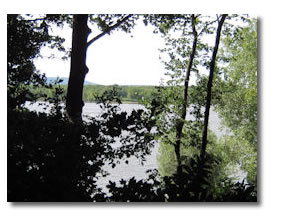 |
|||||||||||
| The first part of this stretch of the Poets’ Pathway lacks a dedicated recreational pathway, but is beautiful, as Sussex Drive is winding and very green here, with some rock outcroppings and the Ottawa River on the left. | |||||||||||
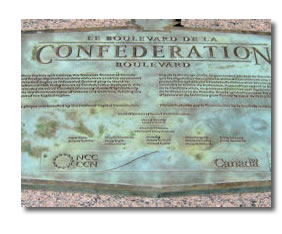 |
|||||||||||
You are on Confederation Boulevard. |
|||||||||||
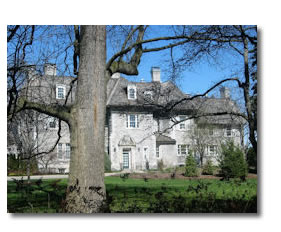 |
|||||||||||
| As you continue, you will soon pass the Prime Minister’s residence, at 24 Sussex Drive on your left, across from the Governor General's residence. | |||||||||||
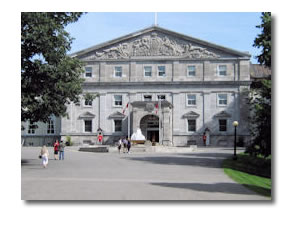 |
|||||||||||
Rideau Hall is on your right, just past McKay Street. |
|||||||||||
 |
 |
||||||||||
| It is open to the public, and has beautiful gardens and open spaces. | |||||||||||
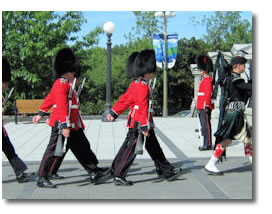 |
|||||||||||
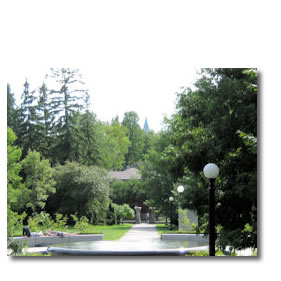 |
|||||||||||
| In the summer you can see the Changing of the Guard ceremony, take a tour of the grounds, hear a concert, or even catch a cricket match on a Sunday. | |||||||||||
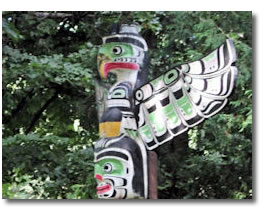 |
|||||||||||
| After you cross Princess Avenue there is a dedicated pedestrian and bicycle lane. | 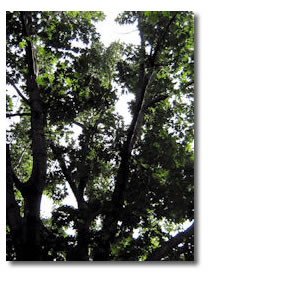 |
||||||||||
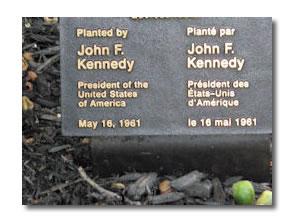 |
|||||||||||
 |
|||||||||||
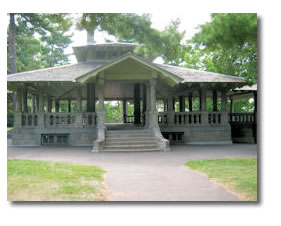 |
 |
||||||||||
| You will come to two roundabouts. The second provides a path to Rockcliffe Pavilion, a lovely and popular place for weddings and picnics. You can stop here to admire the building, or get a sip of water at the fountain before continuing east on the recreational pathway. | |||||||||||
 |
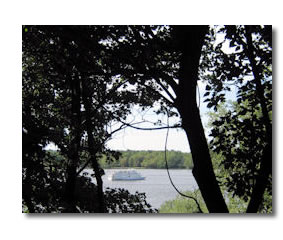 |
||||||||||
| This pathway follows right along the Ottawa River and takes you all the way to the entrance of Rockcliffe Park. | |||||||||||
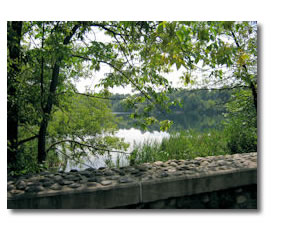 |
 |
||||||||||
| At Tennis Crescent, turn right onto the dirt path that will eventually come to a 4-way intersection. At this intersection there is a path to the east that goes down a fairly steep hill. Take this and it will bring you right to McKay Lake. | |||||||||||
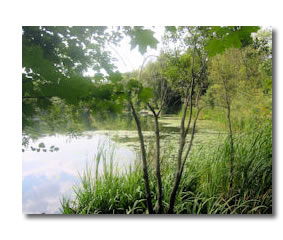 |
|||||||||||
| McKay Lake is one of the most picturesque points in the city and does not allow bikes or dogs on its path. | |||||||||||
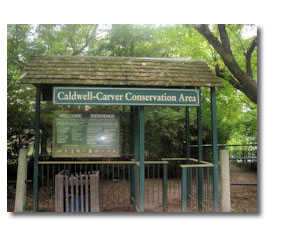 |
|||||||||||
If you wish to bypass the lake, follow these directions: Go left on Hillsdale Road; right on Sandridge Road; right on Lakeway Drive (it turns into Pond Street); then onto Whitemarl Drive, before coming to Hemlock Road across from Beechwood Cemetery. Otherwise enter the path at this clearly marked area and walk around the lake on the east side. |
|||||||||||
 |
|||||||||||
About halfway around you will come to a fork where you can turn left to exit the park through a gate similar to the one you entered. Or take the path you are on as far as it will go to see the whole area, and return to the southern gate. Once you leave the lake you will be on the Bittern Court cul de sac. Walk to the corner and turn right on Whitemarl Drive. |
|||||||||||
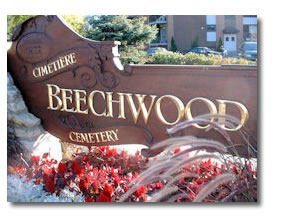 |
|||||||||||
| This will take you to Hemlock Road where you will see Beechwood Cemetery across the road. Turn right here for about two hundred meters until you see the entrance to the cemetery on your left. | |||||||||||
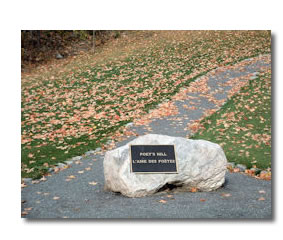 |
|||||||||||
Poet’s Hill is on your left just after you enter the cemetery. |
|||||||||||
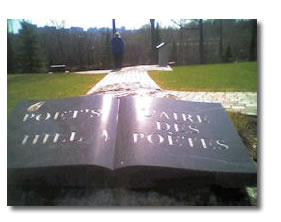 |
|||||||||||
After climbing the hill only a short way, you will see the entrance to Poet's Hill, a gravel path on your left. Poet’s Hill is the last anchor of the Poets’ Pathway and is a beautifully landscaped monument. If you climb to the top of this hill, and stand behind the open book monument ... |
|||||||||||
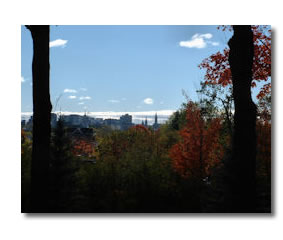 |
|||||||||||
| ...you can look between the tall trees to admire the view of the Parliament Buildings. The view has been protected, thanks to the work of the Green Space Alliance and the attentiveness of the city. | |||||||||||
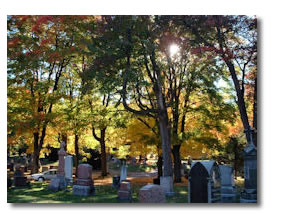 |
|||||||||||
| If you explore the cemetery you will see the tombstones of the Confederation Poets from Ottawa who rest here: Archibald Lampman, Duncan Campbell Scott and William Wilfred Campbell. Many other historical figures are buried in this cemetery. | |||||||||||
| You can obtain a map of the cemetery from the Beechwood Cemetery office, a little furthur up the road. At the side of the road, you will see a bronze plaque, with its engraving of Lampman’s In Beechwood Cemetery. | 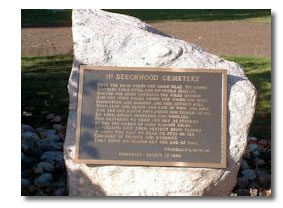 |
||||||||||
This is the end of the last walk in the Poets’ Pathway. If you started on the Poets' Pathway in the morning, and have walked here, the sun should be setting in the west, and you now deserve a song or poem, followed by a cool drink. As the seasons change, so does the look of the walks along the Poets’ Pathway. Barren trees and white winter skies give way to fields of wildflowers and tall grasses, to the greens and yellows of high summer heat, to the reds and browns of fall– but in all seasons, Ottawa’s land, with its woods and waters, its winter storms and summer glory is beautiful and evocative. Its hills and rivers, fields and wildlife were an inspiration to the poets of the Confederation era, who lived here and celebrated Ottawa’s nature, and brought a Canadian voice to the world, helped build a nation. The Poets’ Pathway celebrates the beauty of Ottawa, the poets who first sang her songs, and the many people who love her and her lands today. |
|||||||||||